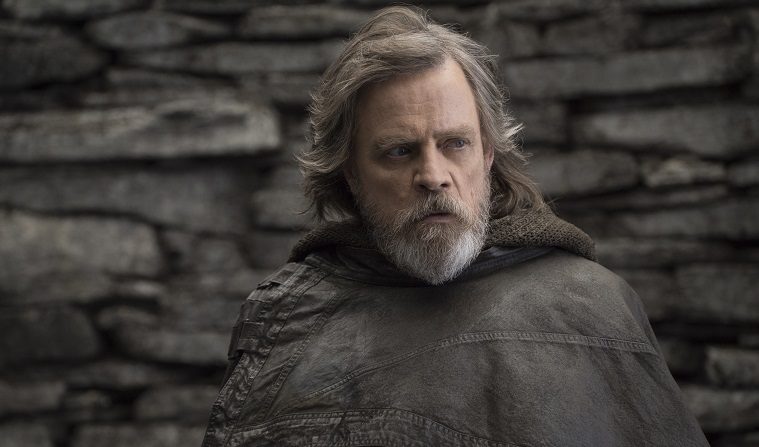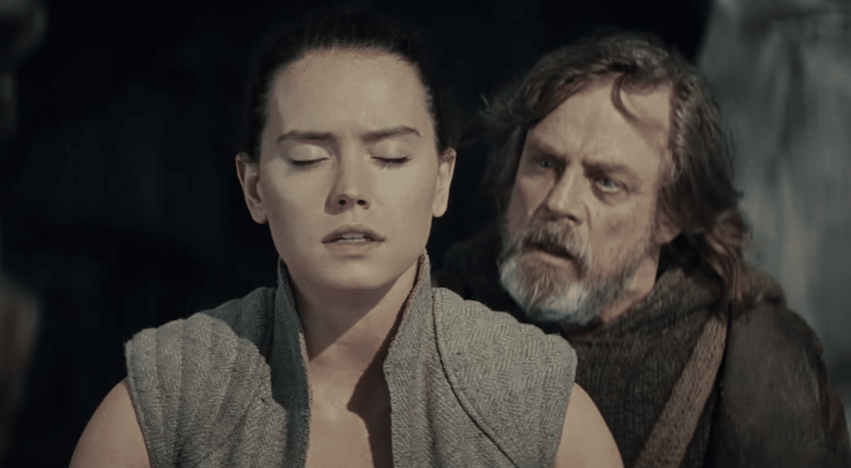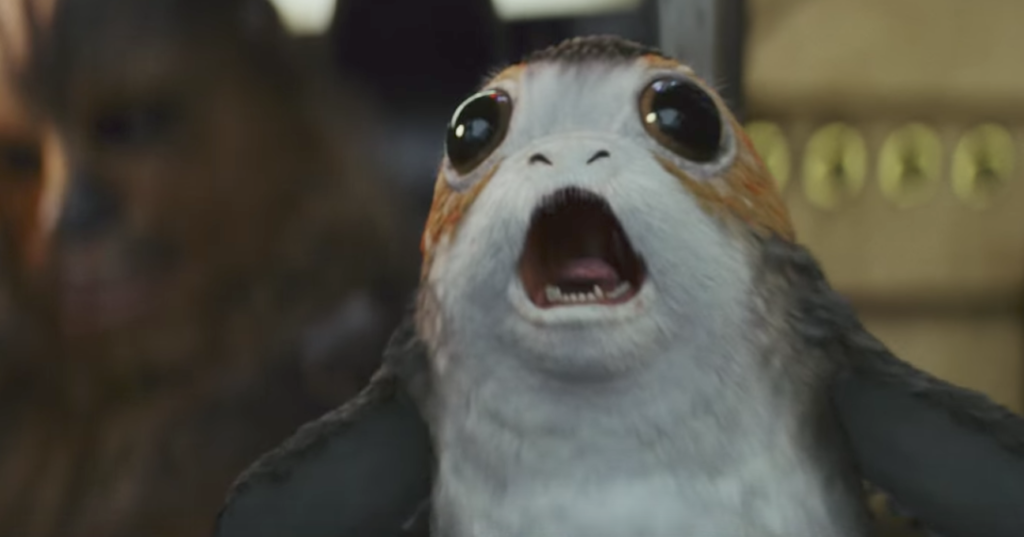Star Wars: The Force Awakens made Star Wars great again, reuniting us with beloved characters and continuing the mythology with new faces and storylines that made the saga relevant for a new generation. Yet many criticized J.J. Abrams for essentially remaking the first Star Wars film, serving as a DJ playing the hits the audience wants to hear.
For a new trilogy of films to resonate, writer-director Rian Johnson couldn’t just tickle nostalgia and play the greatest hits with Star Wars: The Last Jedi. He has to move the narrative ahead, breaking it away from the past. Fortunately, Johnson largely succeeds in doing so, creating a middle portion for this new story that breaks the heroes down and puts them in great jeopardy. Comparisons will inevitably be made to The Empire Strikes Back because of that, but The Last Jedi carries that burden well.
Having made Brick, The Brothers Bloom and Looper previously in his career, Johnson is arguably the most accomplished filmmaker to ever helm a Star Wars film and that definitely shows on the screen. This is a beautifully shot movie, mixing practical sets and CGI seamlessly, which also remembers how important characters and the arcs they follow are to the overall story.
Yet while The Last Jedi might be the best of the nine Star Wars movies from a filmmaking perspective, it’s not the crowd-pleaser that The Force Awakens was. Sure, the previous film leaned on nostalgia, but that helped pack an emotional punch and created many memorable moments. That resonance is lacking in this latest chapter. Because of that, this might not feel like a Star Wars movie to some fans. Yet it successfully closes out the past so the overall story can move forward. Johnson makes some bold choices here that the Star Wars saga needed, and hopefully that pays off down the line.
What made The Last Jedi succeed and which elements didn’t quite work? Here are some of major takeaways from the film:
This is Luke Skywalker’s story
Luke Skywalker’s absence from The Force Awakens was notable. J.J. Abrams had gotten the band back together again, but it was missing the one guy whom the Star Wars saga followed throughout — at least until the very end. The Last Jedi picks up right where we left Luke after Rey found him on the planet Ahch-To, but the rest of that scene doesn’t go the way you might expect, the way you may have imagined for the past two years.
Based on The Force Awakens, we knew that the past 30 years hadn’t gone well for Luke (Mark Hamill). He fled into exile, abandoning his friends and their war against the First Order. His failures were embodied by Kylo Ren, aka Ben Solo, the son of Han Solo and Leia Organa. Ben showed abilities with the Force and Leia wanted her brother to train him as a Jedi and keep him away from the Dark Side and the evil intentions of Supreme Leader Snoke. But until this point, we only got the story from Leia’s point of view and Kylo Ren’s feelings of deceit, betrayal and hatred.
The Luke that Rey finds on Ahch-To is a broken man. The first glimpse of him showed sadness and lament on his face. But in The Last Jedi, we get the full story as Rey (Daisy Ridley) tries to convince him to reunite with the Resistance in their battle, while also being trained in the talents that have been awoken within her. Just how exactly did it go so wrong and so badly with young Ben Solo? Who is ultimately responsible for creating Kylo Ren? And if Luke does have a path to redemption, is it through not making the same mistakes with Rey or does he have to take a more personal stake in the story?
The Last Jedi finds religion
Ian at the Movies
- Borg vs. McEnroe is surprisingly good, portraying two tennis icons not as different as believed
- Rampage works because it doesn’t try to adapt the video game
- Why Tomb Raider and Alicia Vikander break the bad video game movie trend
- Game Night uses all its pieces well, notably Rachel McAdams, for a twisty story full of laughs
- Black Panther is like no other Marvel film, reaching a higher bar as a result: 5 takeaways
Prior to that, the Force was akin to religion. If you believed strongly enough, you could utilize its power. Star Wars can have it both ways, I suppose, though it’s telling that midichlorians haven’t been mentioned since the prequels (OK, and the Clone Wars cartoon). Not everyone is sensitive to the Force. But isn’t it just as easy to presume that it’s also a matter of belief?
Luke isn’t just a man who feels that he’s failed in The Last Jedi. He’s suffered a crisis of faith, questioning everything he previously believed in, everything that he once thought would get him off that desert planet and realize a greater purpose. That includes a belief in himself. Maybe he’s not as great a Jedi Master as Yoda or Obi-Wan was. He let Leia and Han down. No wonder the guy fled to a distant planet, albeit one that has an island with a gorgeous grass and rock-covered landscape.
Kylo Ren is still a fascinating character
After The Force Awakens, I wrote that Kylo Ren could potentially be the greatest villain of the entire Star Wars saga. Following The Last Jedi, I still feel that way. Kylo (Adam Driver) continues to be a wonderfully conflicted, confused character. He wants to be the lethal heir to Darth Vader, yet his bloodline still pulls him away from the Dark Side.
Killing his father, Han Solo, presumably gave Kylo the final push he needed to fully embrace the Dark Side of the Force, to become the malevolent force that Supreme Leader Snoke envisioned. Yet he was also defeated in a duel by Rey, a Jedi neophyte who had never before handled a lightsaber. And that’s not something Snoke lets his young pupil forget, holding it over him as he plays Kylo and General Hux against each other like brothers competing for Daddy’s affection.
Though Snoke cuts Kylo deeply with insults, taunting his insecurities, it serves to fuel the rage that could turn him to completely embrace his inner Vader. Once again, Kylo is portrayed as a petulant rage monster, someone who lashes out in anger because he doesn’t really know what he wants, only what he thinks he must do in order to accomplish whatever goals he believes are necessary. Who might help him achieve those objectives is one of the driving narratives of this story.
Finn and Poe Dameron are set aside
Luke Skywalker, Kylo Ren and Rey are ultimately the most important characters of The Last Jedi. But the three of them comprise only one storyline, maybe two. That gives Johnson a whole lot of movie to fill. Unfortunately, he has to create new characters to move the story along and represent certain points of view, which undercuts the usefulness of those we were introduced to in The Force Awakens.
The character who suffers most because of this is Finn (John Boyega). He was the audience’s entry point into the story in the previous film, grappling with the opposite conflict as Kylo Ren. The idea of a Stormtrooper who deserted the First Order to find a life of his own, but ultimately catches on with the Resistance was so intriguing. Maybe The Force Awakens took that thread as far as it could go, though there are callbacks to it in The Last Jedi. But Finn seems largely superfluous here, stuck in a storyline that doesn’t really go anywhere and thus has no payoff.
His role largely seems to be filled in this story by Rose Tico (Kelly Marie Tran), an engineer doing the grunt work that gets overlooked while heroes become mythologized. Rose is a fun character, and it’s great to see an Asian actress play an important part in a Star Wars movie. Initially, Rose seems to exist largely to remind Finn of why he should be in this story. Eventually, however, she represents how deeply the roots of the Resistance run, providing a “normal person” perspective from who have been brought into this war and have suffered personal casualties because of it.
Another character who isn’t served very well is Poe Dameron. Oscar Isaac makes anyone he plays compelling to watch, but his main purpose in this story is to be the hot-headed counterpart to the reasoned leadership of Leia and Admiral Holdo (Laura Dern), both of whom are looking at the bigger picture and more concerned with saving lives than winning a war. Poe almost seems to regress as a character, acting impulsively because that’s what the story requires, rather than progress from a hotshot pilot into a leader. Maybe we’ll get that from him in Episode IX.
There might be too many jokes
At its core, The Last Jedi is a dark tale, aspiring to be the Empire Strikes Back of this new Star Wars trilogy.
The villain believes that wiping out his mother and uncle is the key to fulfilling his destiny, to leading the First Order to victory in their war. The hero has lost faith, broken by his failures and a philosophy he no longer trusts. General Leia is weighed down heavily by the losses suffered in battle after battle, the many soldiers that she’s lost in a war that seems impossible to win. Additionally, she’s haunted by the loss of her son to the Dark Side.
To help the audience digest what isn’t a very fun story, Johnson sprinkles plenty of humor throughout the script. This might be most embodied by the Porgs, those little penguin-koala hybrids that are just so damn cute and make for great GIFs. There’s one really funny scene with one of them and Chewbacca, and their reactions during the climactic battle are good for some laughs. However, they really don’t serve a purpose in the story, like the Ewoks did in Return of the Jedi or even BB-8 in The Force Awakens.
In terms of the sheer number of jokes and funny lines, The Last Jedi may be the funniest Star Wars movie yet. But there are several points where the humor seems forced and a quip almost seems out of character for the person saying it. Sure, the jokes break up the tension and it’s easy to get caught up in the audience laughing. But I wonder how those lines and moments will hold up on repeated viewings, especially when watching at home.











